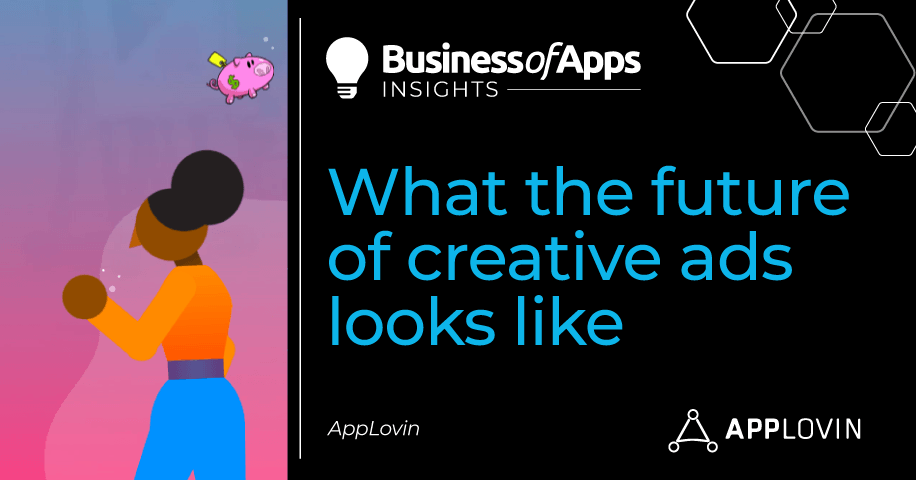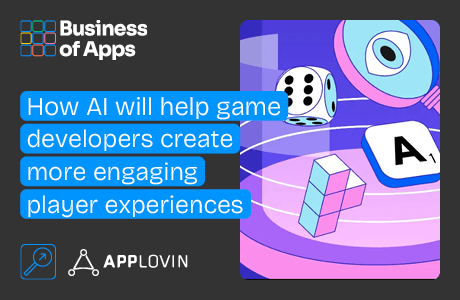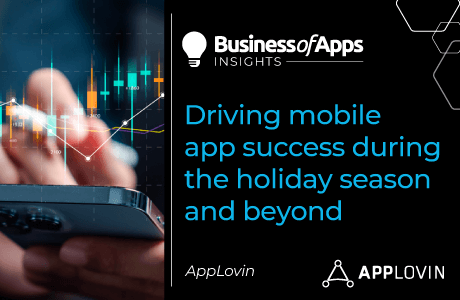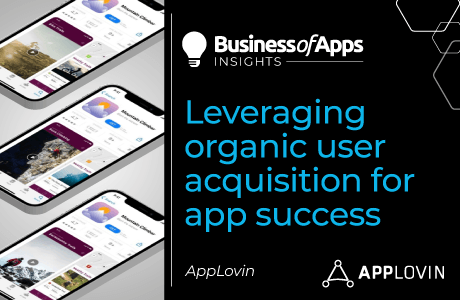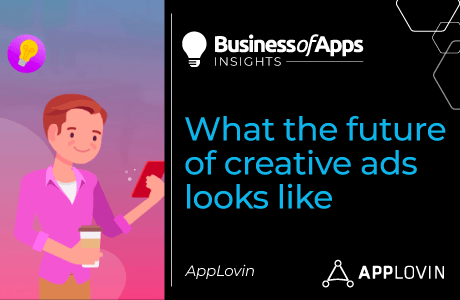Creative ads can be the difference between a successful app and an app that fails. The quality of these ads – often referred to as creatives – has increased dramatically over the past two years as the app marketplace has become more competitive, particularly for apps using the in-app advertising monetisation model.
Moreover, developments in the mobile industry have continued to adjust the way creative teams work, and the current economic downturn is forcing us to double down on this even more. As it becomes more challenging to make a hit app, we are seeing more developers consider new approaches to creatives, in order to acquire new users and boost downloads.
To assist developers with this, SparkLabs – AppLovin’s in-house creative team – analysed how certain variables impact the creative success of each mobile app advertising initiative. Using data from SparkLabs’ own creatives, collected from across 200+ distinct mobile apps, we identified a range of concepts and strategies associated with top-performing creatives to provide analysis in a Performance-Driven Mobile Ad Trends report.
By combining this analysis with SparkLabs’ observations of emerging tech and creative trends in the market, the team were able to additionally forecast some of the likely trends in the mobile ad creative landscape in the coming year. These insights are designed to help app teams make smart, strategic decisions to achieve the best results from their creatives.
So, for developers and advertisers looking to keep creative production on the cutting edge, here’s what to look out for.
Generative AI will transform creative production
One thing we can expect to have an impact on the production process of creatives is AI. Across countless industries, AI is becoming an increasingly important innovation – and mobile advertising is no exception. For example, AI-generated voiceovers were associated with nearly 29% of creative wins last year at SparkLabs, and as the technology becomes more popular, visual and interactive applications, such as graphics, videos, 3D, chatbots and more are becoming more advanced and efficient. These tools are already being used to accelerate content production and data processing at numerous stages of the production process, and we predict that they will eventually make it to the UI level for mobile advertising.
Further adoption of diversity and representation will improve engagement
Users want to engage considerably more when they feel a sense of identification or connection to characters, themes and storylines. Therefore, developers can reach a wider, more diverse user base by introducing characters of various genders, ages, ethnicities, body types, sexual orientations, socio-economic statuses and more through their mobile app advertising. Developers in 2023 must make sure to include visually diverse characters, and when using AI or recorded voiceovers, consider the accent and tone of the person speaking, being careful to avoid stereotypes or caricatures.
Live-action creatives will continue to expand their reach and popularity
Despite tightening budgets, mobile creatives will branch out and produce more polished live-action creatives to grab users’ attention. Creating live-action no longer requires days of shooting with sets, props and scripts. There are now several affordable ways to create live-action snippets with a tight budget.
Relatable and realistic live-action creatives with the look and feel of user-generated content create a casual and inclusive feel and are therefore particularly impactful for user acquisition. Developers may also work in elements like immersive narratives and character diversity to further strengthen live-action content.
Constructing immersion and providing value will be the next steps after attracting attention
Tutorials in the form of voiceovers alongside visual demonstrations were a huge hit in 2022. This showed us how ads that provide value and assist users in developing their understanding are more likely to succeed. We expect this trend to continue. Complex creatives inspired by new, exciting interactions, such as chatbots, AR/VR elements, gyro, and voice recognition will help to create immersion and incentivise users to go further down the funnel after the creative attracts their attention.
Users will continue to become less tolerant of clickbait and irrelevant ads
Mobile app advertising that forces interaction, makes false claims or sells too hard is becoming increasingly costly to user experience and trust. Developers must be wary of alienating users through poor UX, high ad fatigue due to too many irrelevant or frustrating ads, ads that seem like privacy risks, and other frustrating or seemingly disingenuous creative content.
If you choose to serve ads with content that isn’t as relevant to your app, consider adjusting other variables. For example, try mechanics that align well with user motivations – if a user liked the puzzles in your ads, likely they’ll also like the puzzles in your app.
Marketers will increasingly explore CTV as an additional channel for creatives
CTV has evolved into a measurable, accountable performance marketing channel. While mobile is a strong channel for advertisers and brands, adding CTV to a marketing mix can only extend the reach. With the increasing popularity of both free ad-supported TV (FAST) and ad-supported video-on-demand (AVOD), streaming services with specific audiences can allow marketers to run extremely precise ads with tailored campaigns that will lead to great ROI through conversion.
CTV users are used to more story-rich ads, as that’s how traditional broadcast television has operated for decades. Therefore, developers can build ads around factors like narrative, emotional impact, and the devices on which you can experience the app.
Staying ahead of the market
Nothing has become more important to drive success for mobile user acquisition in the past few years than creatives. Of all our predictions, one that is most certain is that they will continue to be fundamental to apps’ success. Whether you’re a performance marketer, data analyst, developer, or designer — being able to anticipate and innovate the next high-performing ad trend is critical to staying a step ahead of the market in today’s increasingly competitive industry.



